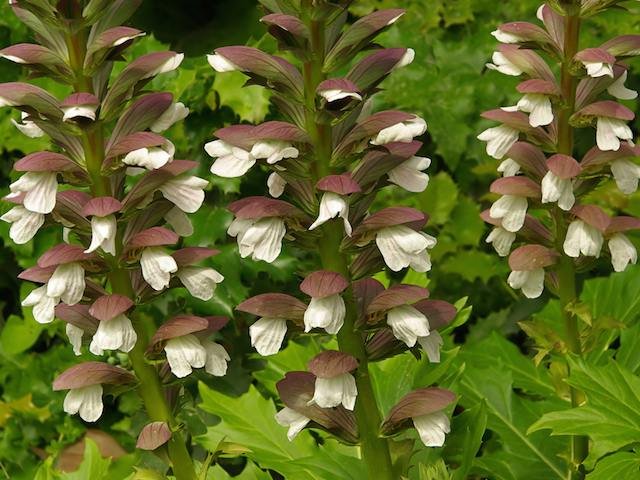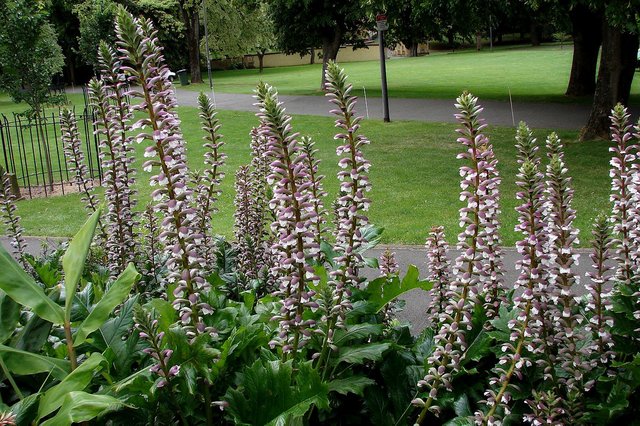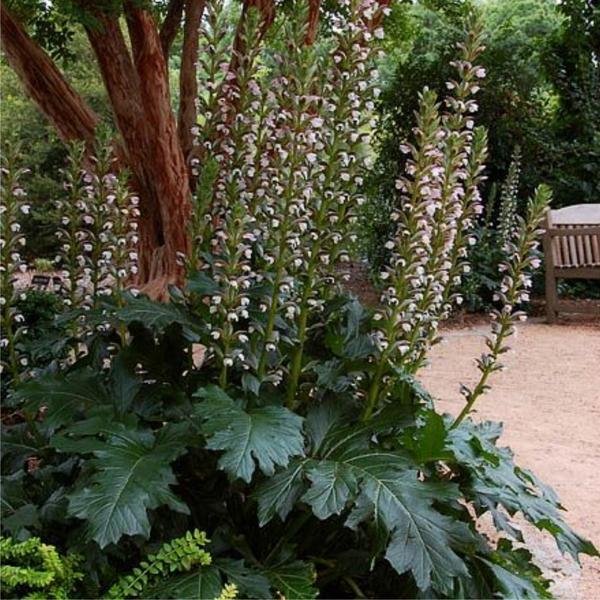You are viewing a single comment's thread from:
RE: Oyster Plant - a highly regarded plant in Ancient Rome and Greece.
Acanthus Mollis – Oyster Plant is a shiny, arching, long, glossy mid-green leaves, cut deeply. Tall flower spikes. Flowers white and purple. Continuous flowering throughout summer. Will flower into winter in sub tropics. A long lived classic foliage plant.

Acanthus mollis is a robust herbaceous perennial with handsome, lobed foliage and tall, erect racemes of two-lipped flowers with colourful bracts. It is a vigorous, hardy plant with large, glossy dark green leaves and is a true architectural beauty.
Acanthus mollis takes about two years to establish itself but then goes from strength to strength and can grow to over five feet tall. In spring the leaves spring up from ground level in a robust whorl. In late summer, the flower stalks rise elegantly from their centre, tall racemes of 30 or so white flowers appear, each with dusky purple bracts. Its impressive flowers last for weeks and give a welcome vertical component to garden designs


Acanthus mollis has an interesting history, it was used as a medicinal herb in earlier days. If you visit the medicinal herb gardens from old monasteries in Europe you'll always find Acanthus still growing.
The acanthus leaf is often used as a motive in architecture and art through ages. The representation of the Acanthus leaves on the capitals of the Corinthian pillars is familiar to us all and a beautiful example is still seen at the Monument of Lysicratis in Athens.
Acanthus became a symbol for immortality, for this reason it was often used in funereal art (gravestones etc.) Sometimes it’s a symbol that stands for gentle courage because of its soft leaves.
The lush green leaves, the strong flower, it is hard not to be impressed by this plant that has seen the entire history of our species.


Acanthus require deep, fertile, well drained soils in a sheltered position. They perform best in a sunny or lightly shaded position, they will tolerate deep shade, but produce fewer or no flower spikes. They can cope with low temperatures as long as their tap roots are established and drainage is good. Cover with a protective mulch for the first two winters.
Water in hot dry weather, if moisture is not maintained its soft leaves can droop. The leaves are very attractive to slugs, snails and leaf-eating insects, controls may be necessary, particularly in wet weather.
Apply a slow, controlled release fertiliser around the base of the plant during the plants growing season to reduce fertiliser burning on the leaves. An acanthus grown in our climate only sets a few viable seeds per spike, which look like little wrinkled prunes. In the wild they'd be propelled 6m (20ft) or more when the capsule splits. Harvest seeds in late winter and sow in spring. Cut the stems back to almost ground level after flowering.
Avoid disturbing the root system until the plants becomes overcrowded. Plants can be divided in spring or autumn but can be divided successfully at almost any time if kept well-watered afterwards. Division is usually most successful while plants aren’t in active growth.

Src
Great info and pics, thanks.